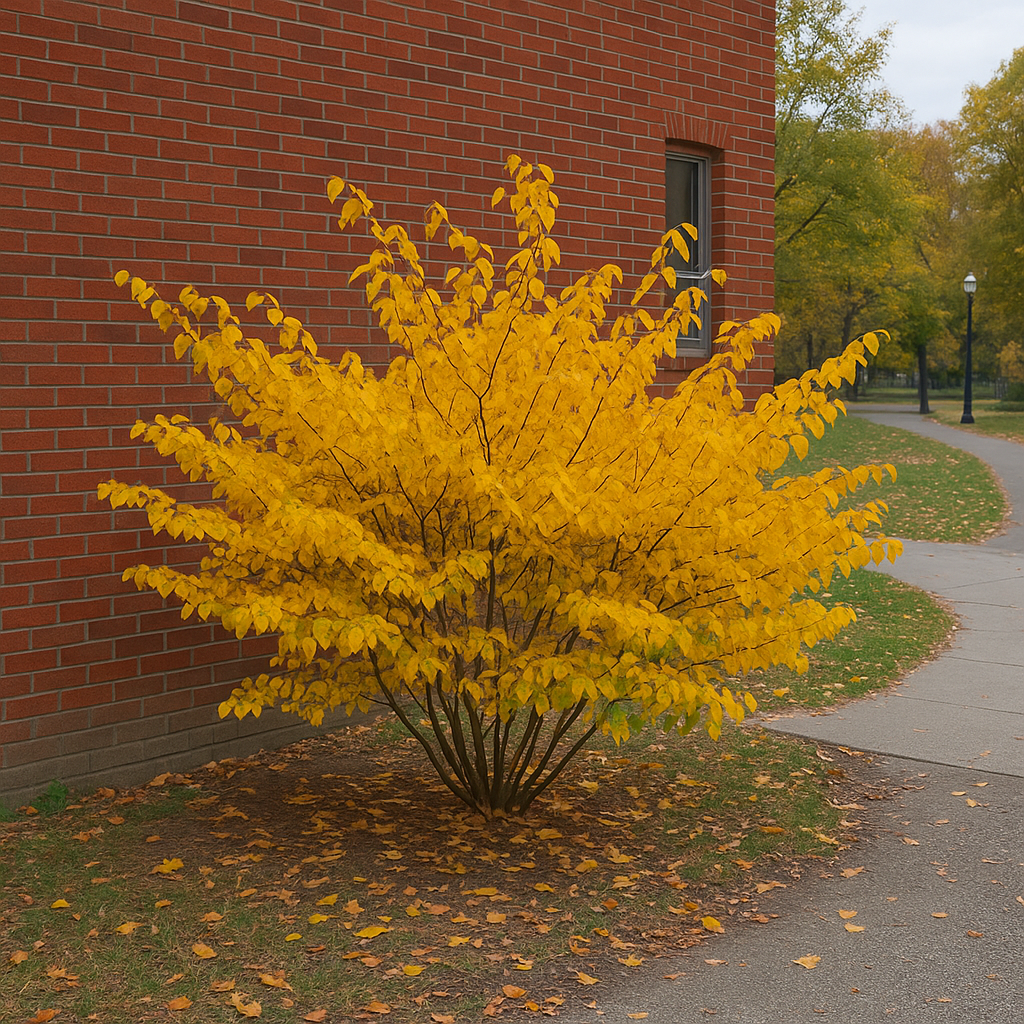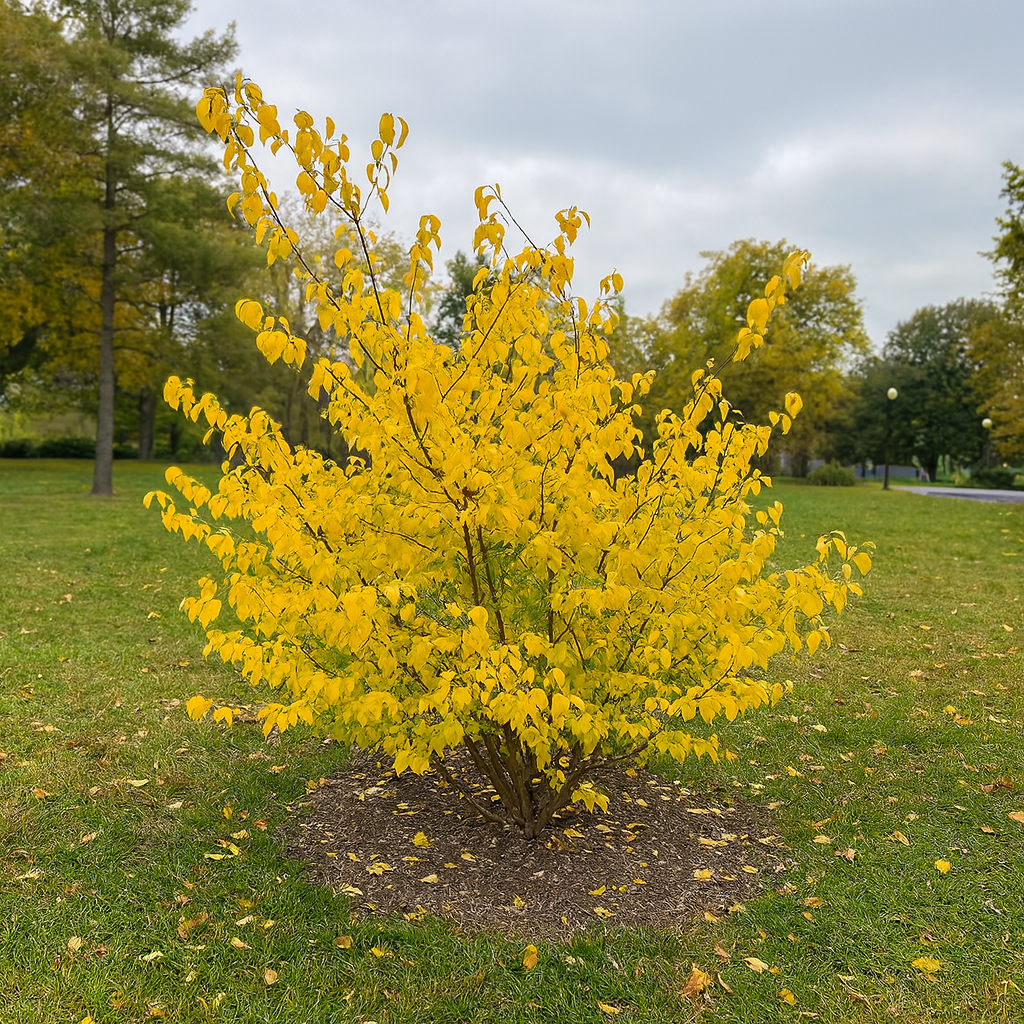Limited Quantities - Reserve Now For Fall
Spicebush
Spicebush
Couldn't load pickup availability
Lindera benzoin
Spicebush
The Spicebush is a fragrant, shade-tolerant native shrub prized for its bright yellow spring blooms, aromatic foliage, and brilliant fall color. Often found in moist woodlands, this underappreciated gem is a host plant for the Spicebush Swallowtail butterfly and a vital resource for wildlife.
Whether you're building a pollinator garden, woodland edge, or rain garden, the Spicebush delivers sensory appeal, ecological value, and seasonal interest.
Spicebush Overview
|
Attribute |
Details |
|
🌿 Botanical Name |
Lindera benzoin |
|
🏷️ Common Names |
Spicebush, Wild Allspice, Northern Spicebush |
|
🌳 Mature Height |
6–12 feet |
|
🌐 Mature Width |
6–12 feet |
|
📈 Growth Rate |
Moderate (12–24 inches per year) |
|
⏳ Lifespan |
30–40+ years |
|
🧊 USDA Zones |
4–9 |
|
❄️ Chill Hours |
500–800 hours |
|
☀️ Sun Preference |
Partial shade to full shade (tolerates morning sun) |
|
🧱 Soil Type |
Moist, rich loam; tolerates clay and sandy soils |
|
⚖️ Soil pH |
Slightly acidic to neutral (5.5–7.0) |
|
💧 Water Needs |
Moderate; prefers consistent moisture |
|
🌸 Flower Color |
Small yellow blooms on bare stems in early spring |
|
🍒 Fruit Type |
Red drupes (only on female plants if pollinated) |
|
🐝 Pollinators |
Attracts native bees, butterflies, and beetles |
|
🌿 Growth Habit |
Rounded, multi-stemmed, dense shrub |
|
↔️ Spacing |
6–10 ft apart for naturalistic groupings |
|
🏡 Landscape Uses |
Woodland gardens, rain gardens, wildlife borders |
|
🧹 Maintenance Level |
Low |
Environmental Benefits
🌸 Provides nectar for early-emerging pollinators
🦋 Host plant for the Spicebush Swallowtail caterpillar
🍒 Fruits feed birds, especially during fall migration
🌿 Supports forest understory diversity and soil health
Pros & Cons
|
✅ Pros |
⚠️ Cons |
|
🦋 Excellent butterfly host and wildlife value |
🍒 Requires male and female plants for fruiting |
|
🌸 Very early spring blooms for pollinators |
☀️ Less vigorous in full sun or dry soils |
|
🌿 Aromatic leaves with pleasant spice scent |
🐛 Can suffer minor insect feeding but usually rebounds well |
|
🍁 Brilliant golden-yellow fall color |
🌱 May need occasional shaping in formal gardens |
|
🧬 Native to Eastern U.S.; ideal for naturalized settings |
💧 Prefers consistently moist soil, not drought-tolerant |
Planting & Care Guide
🛁 Soak thoroughly before and after planting to minimize shock
🕳️ Dig a wide hole and set at same depth as original rootball
🌾 Mulch with 2–3 inches of composted leaf mulch or bark
💦 Water consistently the first two years; mulch helps retain moisture
✂️ Prune lightly in late winter or early spring to shape if needed
🧪 Feed in early spring with compost or low-nitrogen fertilizer
Spicebush is a sensory delight and ecological cornerstone for shaded landscapes. With its early yellow blooms, butterfly-hosting leaves, and subtle spicy aroma, this native shrub adds purpose, fragrance, and beauty to any understory or rain garden planting.
Share




